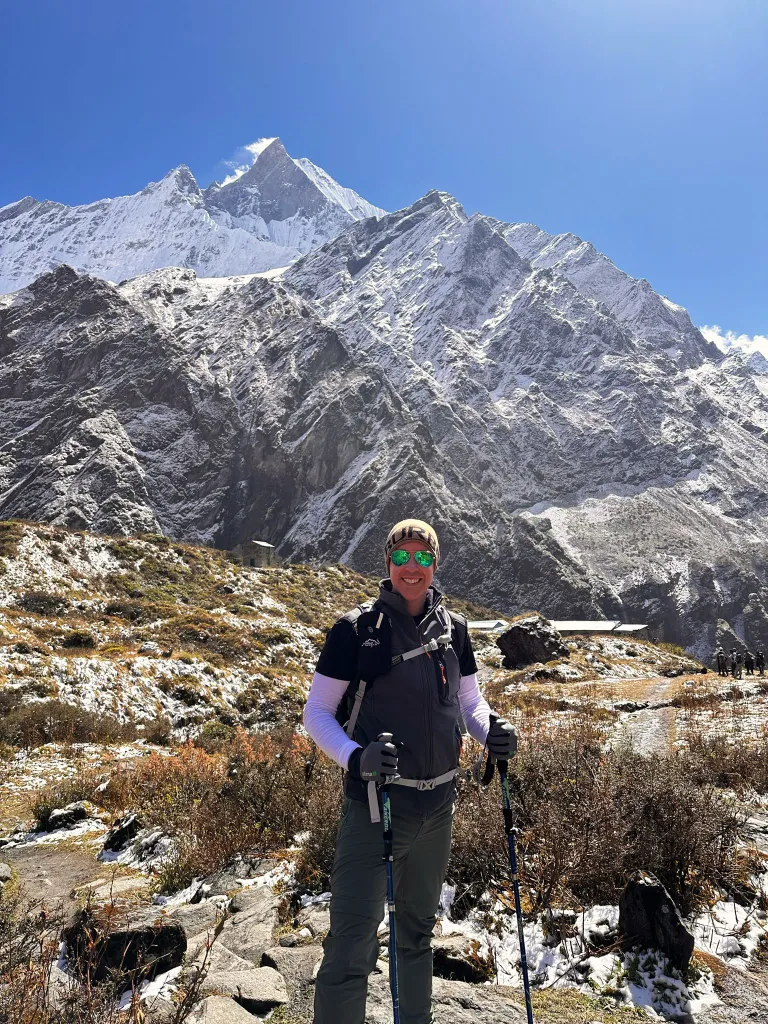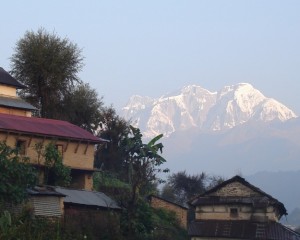Here is why it is so difficult to climb Everest. A guide's perspective
So, you have a dream of climbing Mount Everest? The Mount Everest is an adventure of a lifetime. The extreme difficulty of Everest adds immense value to this dream.
Before the ascent, climbers embark on a challenging trek to Everest Base Camp (5,100m). You find through rough terrains and gain crucial acclimatization through iconic passes like Renjo La and Chola.
However, the journey is not just about reaching the top; it involves intense training with mountaineering gear and getting through sections like the Khumbu Icefall, often termed the "suicide passage."
The climb demands resilience against steep inclines, altitude sickness, and thin air. Climbers must push hard, relying on fixed lines for assistance.
Success on Everest is not just about physical prowess but also adapting to the unpredictable Himalayan weather. Spending more time in the region increases the chances of a successful ascent.
In this daunting adventure, climbers face risks and challenges at every step. It requires preparation and a deep understanding of the mountain's demands.

However, among all these, we forget one crucial factor: the guide. They are the silent heroes in the mountains who lead others to their dream destination. Here, we discuss with a few Sherpas why it is so difficult to climb Everest and trek around its mountain.
Firstly, it's very risky.
Guiding on Everest is more than a profession; it is a sacred duty. Over the past century, more than a third of the 332 lives claimed by Everest were those of mountain guides. These individuals are the unsung guardians whose decisions bear the weight of lives. In the stillness of the Himalayas, their role becomes a symphony of resilience and unwavering commitment.
As the climbers ascend, the guides pass through physical terrain with the balance between risk and safety. Their role is one of the major parts of human determination and the vital forces of nature.
Guides at the Crossroads: Controversies and Predictions
Our journey brings us to a critical point in timeââ¬âthe controversies surrounding Nepal's direction that compels climbers to be accompanied by guides. This directive has started a debate, with some Sherpas predicting seismic shifts in the guiding landscape within the next decade. The crossroads uncover a change and adaptation against the background of Everest's towering peaks.
The controversy surrounding the direction sheds light on the dynamics between climbers and their guides. It sparks a dialogue of the Everest's challengeââ¬âstriking a balance between the thrill of adventure and the assurance of safety.
What makes Everest so difficult?
Long Journey
The Mount Everest expedition is an extended journey of 60 days. It demands planning and dedication. The expedition season kicks off in late March. Then, it starts from Lukla and passes through beautiful locals like Phakding, Namche, Tengboche, Dingboche, and Gorakshep before reaching the Southern Everest Base Camp (5,300 meters). Here, participants undergo an extensive acclimatization process that is crucial for adapting to the harsh conditions.
Then, you pass through the ever-shifting ice pathway, which is one of the numerous challenges. It requires climbers to spend strategic periods at different camps, including acclimatization halfway above the Khumbu glacier and at camp 1.
A calculated descent to the base camp starts further ascents to higher elevations at camp 2, the base of Mt. Lhotse. This process involves ascending, acclimatizing, and descending.
It is a crucial preparatory phase for the summit climb to dive into altitudes of 7,925 meters, known ominously as the "Death Zone." Given the high-risk nature of the climb, this extensive timeframeââ¬âapproximately two monthsââ¬âis necessary for a comprehensive and safe Mount Everest expedition.

Throughout the guided trek expedition, participants cover an average of 15 km per day. They trek through rocky and rugged terrain, occasionally blanketed in snow.
With porters or mules handling the load, physical preparedness becomes important for the ascent to Everest Base Camp. The preparation is quite challenging yet immensely rewarding nature of the Everest expedition. It shows your story of endurance, acclimatization, and efforts over one of the world's most formidable peaks.
Altitude Challenges
The incredible journey to summit Mount Everest unveils a series of formidable challenges, each contributing to the unique difficulty of this epic climb. The first hurdle is the extreme altitude, introducing potential health issues like altitude sickness due to thin air and reduced oxygen levels. Climbers strategically ascend with supplementary oxygen as the critical role of acclimatization in passing through the altitudes safely.
Difficult Weather Conditions
Weather emerges as another significant problem. Everest experiences extremes ranging from bone-chilling lows of -36úF to -19 úC in summer. Persistent high winds, heavy snowfall, and unpredictable conditions escalate the climb's complexity, especially as elevation increases.
Avalancheââ¬â¢s Threat
Avalanches are also a high risk on Everest, triggered by factors like abrupt weather changes, climber movements, and shifts in snow and ice. These snow masses not only create life-threatening situations. But also obstruct critical routes to the summit, which requires thorough preparedness and risk mitigation strategies.
Difficult Terrain
The challenging terrain is steep and rocky sections demanding advanced technical climbing skills. Even seasoned climbers find these stretches appealing. The route's crowded with numerous climbers increases the difficulty by limiting flexibility and increasing the potential for accidents.

Physical Fitness
Physical fitness emerges as an important factor, given the nature of the climb. The journey is a combination of high altitudes, harsh weather, and challenging terrain. Even experienced climbers must contend with the exhausting nature of the ascent, enduring prolonged, demanding days with heavy backpacks.
Overcoming these challenges demands skill and experience with mental resilience and strategic planning. Successfully dealing with these hurdles ensures a safe ascent to the pinnacle of the world's highest peak. It makes the Everest climb an extraordinary adventure for those ready to embrace the thrill.
Navigating the Danger Zone: Sherpas and the Khumbu Icefall
Guides, primarily the Sherpas, navigate Everest's danger zoneââ¬âthe Khumbu Icefall. This section unveils the unpredictable conditions of the icefall, a shifting labyrinth that adds an element of risk to their indispensable work. Through their eyes, we witness the challenges faced in ensuring a safe passage for climbers.
As we delve into the intricacies of the Khumbu Icefall, a vivid picture emerges of the danger and beauty intertwined in this section of Everest. The Sherpas, the backbone of Everest expeditions, become the silent architects of safe ascents.
Economics of Everest: The Cost of Conquering
The economic intricacies of Everest expeditions come to light as we explore the costs involved. A separate fee of $600 per expedition member is allocated for the icefall doctorsââ¬âguides who set up ladders and ropes, emphasizing the indispensable role of these individuals in the Everest summit equation. This economic perspective adds depth to our understanding of the Everest ascent.
The financial aspect of Everest's climb unveils a different layer of the expedition. The cost is not just a monetary investment but a recognition of the human investmentââ¬âboth climbers and guides contributing to the shared dream of conquering Everest.
Commercialization and its Toll on Guides
As Everest's popularity soars, the risks for guides intensify. The commercialization of Everest amplifies these risks while simultaneously limiting the annual income of guides. This section peels back the layers of a lucrative industry, revealing the delicate balance between commerce and the expertise of these guides. Here, Everest becomes more than a climb; it transforms into a complex interplay of risks and rewards.
The commercialization of Everest poses challenges not just for climbers but for the guides who navigate its peaks. The delicate equilibrium between adventure and business becomes a central theme, raising questions about the sustainability of Everest expeditions.
The Decline of Expert Guides: A Rising Concern
The surge in Everest tourism has coincided with a decline in the number of expert mountain guides. This shortage contributes to a concerning rise in fatalities, prompting the Nepalese government to confront the challenges of managing this booming industry. We delve into the implications of this decline, contemplating its impact on the safety and sustainability of Everest expeditions.
The diminishing number of expert guides raises a red flag, highlighting the need for strategic measures to ensure the safety and success of Everest expeditions. The rising concern becomes a call to action for the preservation of both the mountain and the legacy of experienced guides.

Nepal Vision's Odyssey: Resilience Amidst Adversity
At the heart of Everest's saga lies the tale of Nepal Vision, an agency whose journey epitomizes resilience. Overcoming setbacks, Nepal Vision's determination to return to Everest reflects the indomitable spirit that propels climbers forward on this treacherous path. With this our odyssey becomes a testament to the human spirit's capacity to endure and triumph.
Nepal Vision's story is not just our own but a reflection of the collective will of those who have faced Everest's challenges with us. Each step, a testament to the resilience that defines both climbers and guides on this arduous journey.
So, as we conclude our exploration into the world of Everest and its guides, what unfolds is a story that goes beyond just climbing and conquering peaks. These guides, the real heroes of the journey, reveal tales of determination and strength.
Wrapping up
From the guiding controversies to the dangers of the Khumbu Icefall and the economic intricacies of Everest, it's evident that this journey is more than just an adventure. Everest becomes a delicate balance between the thrill of the climb and ensuring everyone's safety, between commerce and the expertise needed to navigate its challenging slopes.
As Everest grapples with commercialization, the decline in experienced guides becomes a significant concern. It's a call to preserve not only the mountain's beauty but also the legacy of those guides who navigate its dangerous paths.
In saying goodbye to the Everest, we realize that beyond its mighty peaks, Everest's mysteries are woven into the lives of those who guide the way. The journey doesn't just stop at conquering heights; it touches the very essence of human spirit and endeavor and our sherpas do it with a smile on their face.

FAQ







